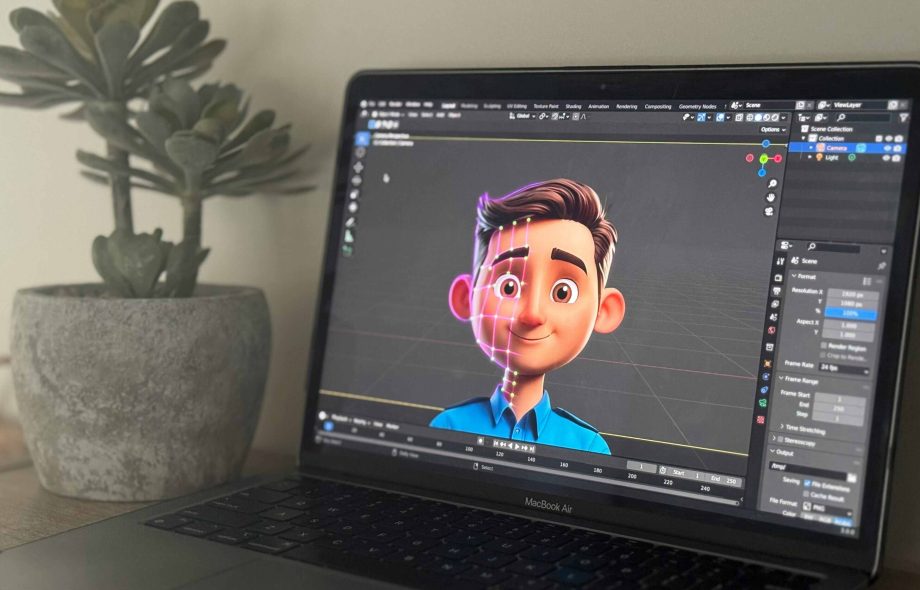In an increasingly competitive landscape, understanding the distinctions between print design and digital design is essential for building a cohesive, high-impact brand presence. As a team committed to delivering world-class print design services and comprehensive brand identity design, we create visual systems that perform flawlessly across both physical and digital touchpoints. This guide provides an in-depth exploration of how each medium works, the strengths they offer, and the strategic moments when they deliver maximum value.
Understanding the Core Principles of Print Design
Print design is the art of creating visually compelling materials that exist in the physical world. Because print engages the senses touch, weight, texture, and even smell it offers an emotional presence that digital media cannot replicate.
Precision, Permanence & Tangibility
Print requires meticulous attention to detail. Variables such as color calibration, ink absorption, paper grain, and print finishes (matte, gloss, UV spot, embossing) influence every outcome. Once printed, the material becomes permanent, making accuracy non-negotiable.
When Print Design Delivers Maximum Impact
- Luxury branding and high-end brand identity systems
- Business cards, brochures, stationery, and corporate kits
- Packaging that elevates product value
- Event signage, billboards, and retail displays
- Annual reports, catalogs, and magazines
Print design creates credibility and elevates perceived brand value essential for businesses aiming to leave lasting impressions.
Understanding Digital Design
Digital design focuses on visual communication across screens, websites, mobile applications, social media, email marketing, and digital ads.
Adaptive, Interactive & Data-Driven
Digital assets must adapt to varying screen sizes, platforms, and user behaviors. Interactivity motion graphics, animations, clickable elements enables a dynamic brand experience. Digital design allows real-time updates, A/B testing, performance tracking, and continuous optimization.
Where Digital Design Excels
- Websites, landing pages, and web UI/UX
- Social media graphics and advertising campaigns
- Email templates and newsletters
- App interfaces and dashboards
- Digital presentations and pitch decks
Digital design supports rapid deployment and global reach at scale.
Key Differences Between Print & Digital Design
1. Color Systems
- Print uses CMYK and Pantone for calibrated precision.
- Digital relies on RGB and HEX for vibrant on-screen results.
This distinction requires brand identity design that accounts for consistency across mediums.
2. Resolution & Output
- Print demands high DPI (usually 300–600).
- Digital uses pixel-based resolutions tailored to devices.
3. Layout Constraints
- Print design works within fixed physical dimensions.
- Digital layouts must adapt responsively across multiple screens.
4. Production Process
- Print production involves proofing, plate preparation, and finishing.
- Digital production focuses on exporting files, coding, and publishing.
5. User Experience
- Print: sensory, physical, memorable.
- Digital: interactive, fast, measurable.
Choosing the Right Medium: Best Use Cases
When to Choose Print Design
- Launching premium packaging that strengthens product storytelling
- Creating corporate collateral to establish professional credibility
- Designing trade show materials, posters, or banners
- Developing high-value direct mail that demands attention
Our specialized print design services ensure every physical asset reflects excellence in craftsmanship.
When to Choose Digital Design
- Launching or optimizing your website
- Building social media campaigns and digital advertising funnels
- Designing high-engagement email newsletters
- Improving user experience across apps and interfaces
Digital design drives reach, engagement, and measurable performance.
Why Combining Print & Digital Produces Superior Branding
Unified branding across both mediums increases recognition and trust. When executed correctly, each channel amplifies the other.
Cross-Media Strengths
- Print drives long-term brand recall
- Digital supports rapid campaign deployment
- Together, they create a 360-degree brand ecosystem
A strong brand identity design system should translate seamlessly across brochures, packaging, social media, websites, and digital ads.
Essential Elements for a Fully Integrated Visual Identity
1. Consistent Typography & Color Standards
Create a typography hierarchy and color palette that can be reproduced accurately in both CMYK and RGB formats.
2. Unified Graphic Style
Patterns, icons, illustrations, and textures should feel cohesive whether printed or displayed on-screen.
3. Responsive Logo Systems
Develop variations for print, mobile, signage, icons, and social platforms.
4. Template Libraries for Efficiency
Prepare design systems for:
- Social media posts
- Brochures and flyers
- Website banners
- Stationery and packaging
This ensures speed, consistency, and brand alignment.
How We Support Your Brand Across Both Mediums
As a team specializing in print design services and complete brand identity design, we build visual identities that maintain clarity, impact, and consistency everywhere they appear. Our process integrates:
- Deep brand strategy
- Multi-platform design systems
- Print execution with premium finishes
- Digital design optimized for performance
- Seamless brand application across all customer touchpoints
Conclusion: Building a Brand That Excels Online and Offline
Balancing print and digital design is essential for brands that aim to stand out in a crowded marketplace. Print provides lasting impact and tactile engagement, while digital ensures flexibility and broad reach. Together, they form a complete visual ecosystem that strengthens recognition and drives long-term brand success.
A strategic investment in elevated design across both physical and digital environments ensures your brand communicates authority, credibility, and value at every interaction.
 :
https://xoomplus.co.uk/
:
https://xoomplus.co.uk/

